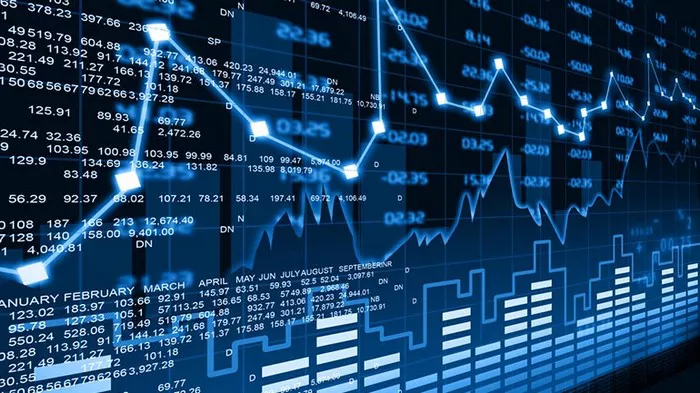S&P futures, or Standard & Poor’s futures, are a key component of the global financial markets, providing investors and traders with insights into the anticipated future performance of the S&P 500 index. Understanding and interpreting current S&P futures is a valuable skill for anyone involved in financial markets, as it offers a glimpse into market sentiment and potential trends.
Understanding S&P Futures
S&P futures are financial contracts that allow market participants to speculate on the future price movements of the S&P 500 index, which represents a broad cross-section of the U.S. stock market. These futures contracts derive their value from the underlying S&P 500 index and serve various purposes, including hedging against market risk, portfolio diversification, and pure speculation.
Key Components of S&P Futures
To effectively analyze current S&P futures, it’s important to understand the essential components of these contracts:
Underlying Index: S&P futures are linked to the S&P 500 index, which consists of 500 of the largest publicly traded companies in the United States. The index’s performance determines the value of the futures contract.
Contract Specifications: S&P futures contracts are highly standardized, specifying the contract size, expiration date, and terms for settlement. This standardization ensures transparency and uniformity in trading.
Expiration Dates: Each futures contract has a specific expiration date, indicating when the contract becomes invalid. Traders can choose from various contract months, each with its own expiration date.
Long and Short Positions: Traders can take either a long position (speculating that the S&P 500 index will rise) or a short position (speculating that it will fall) in S&P futures. This flexibility allows for a wide range of trading strategies.
Leverage: Futures contracts typically require a fraction of the contract’s total value as initial margin, allowing traders to control a more substantial position with a relatively small amount of capital. However, leverage can magnify both gains and losses.
Analyzing Current S&P Futures
Interpreting current S&P futures involves a systematic analysis of various elements to gauge market sentiment and potential trends. Here are the key steps to analyze current S&P futures effectively:
Check the Ticker Symbol: Current S&P futures are often quoted with ticker symbols that represent the specific futures contract and its expiration month. For example, “ESM21” might indicate an S&P 500 futures contract expiring in June. Ensure you have the correct ticker symbol for the specific contract you want to analyze.
Examine the Price: The price of an S&P futures contract reflects the anticipated future value of the underlying S&P 500 index. If the futures price is higher than the current index level, it suggests a bullish outlook, indicating that investors expect the index to rise. Conversely, a lower futures price suggests a bearish sentiment, anticipating a decline in the index.
Consider the Change: Pay attention to the change in the futures price. A positive change indicates an increase in the futures price compared to the previous trading session, suggesting optimism. Conversely, a negative change suggests a decrease, signaling pessimism.
Assess the Volume and Open Interest: Volume reflects the number of contracts traded in a given session, while open interest represents the total number of outstanding contracts. High volume and open interest suggest strong market participation and greater liquidity, making it easier to enter or exit positions.
Review Pre-Market and After-Hours Trading: S&P futures trade outside of regular market hours, offering insights into early market sentiment. Pre-market and after-hours trading can provide clues about how the market may open during regular trading hours.
Consider Economic and Geopolitical Events: Take into account any upcoming economic releases, corporate earnings reports, or geopolitical developments that could impact market sentiment. These events can influence S&P futures prices and should be factored into your analysis.
Factors Influencing Current S&P Futures
Several factors can influence the movement of current S&P futures:
Economic Indicators: Economic data releases, such as GDP growth, employment figures, and inflation rates, can significantly impact current S&P futures by shaping market expectations and risk appetite.
Corporate Earnings: Earnings reports from companies within the S&P 500 index have a substantial effect on S&P futures. Positive earnings can boost market confidence, while disappointing results can lead to bearish sentiment.
Interest Rates: Changes in interest rates, as determined by central banks, can influence S&P futures, particularly those with longer expiration dates. Higher rates may lead to lower futures prices as investors seek higher returns elsewhere.
Global Events: Events outside the U.S. market, such as geopolitical developments, international trade disputes, or financial crises, can impact S&P futures prices, reflecting broader market sentiment.
Market Sentiment: The collective sentiment of traders and investors plays a crucial role in current S&P futures. News events, social media trends, and sentiment indicators can influence trader behavior.
Conclusion
Analyzing current S&P futures is a valuable skill that can provide insights into market sentiment and potential trends. By understanding the key components of futures contracts, analyzing price movements, and considering relevant factors, investors and traders can make more informed decisions.
However, it’s important to remember that futures trading involves risk, and market dynamics can change rapidly.


